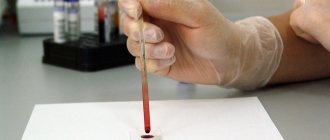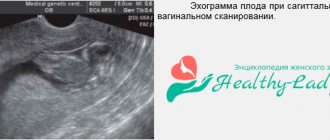Throughout pregnancy, the placenta develops along with the baby. This organ does not receive special attention from the mother. After the birth of a child, many women do not notice the delivery of the placenta at all. However, this is a very significant organ thanks to which the child develops.
We will tell you in this article what happens to the placenta after childbirth and what functions it performs.
What is this
The afterbirth is a temporary organ that the embryo needs throughout the entire pregnancy.
It plays a special role in the breathing, nutrition and development of the baby, and also protects the fetus from harmful external factors.
Visually, the child's place looks like a bag, to which a membrane is attached inside. This membrane performs an important function, as it is the connection between the circulatory system of the baby and the mother.
The system consists of a membrane, placenta and umbilical cord. You should know that everything is formed in the 4th month, and by the 36th week it tends to age. You can talk about how much a given organ weighs based on the situation. If pregnancy is normal and there are no complications, the weight will be 500 g, the size will be from 15 to 20 cm.
Development of the placenta
The fertilized egg travels from the fallopian tube to the uterus before becoming an embryo and then a fetus. Approximately 7 days after fertilization, it reaches the uterus and implants into its wall. This process takes place with the release of special substances - enzymes, which make a small area of the uterine mucosa loose enough so that the zygote can take hold there and begin its development as an embryo.
A feature of the first days of embryo development is the formation of structural tissues - chorion, amnion and allantois. The chorion is villous tissue that connects to the lacunae formed at the site of destruction of the uterine mucosa and filled with maternal blood. It is with the help of these outgrowths-villi that the embryo receives from the mother all the substances important and necessary for its full development. The chorion develops over 3-6 weeks, gradually degenerating into the placenta. This process is called “placentation”.
Over time, the tissues of the embryonic membranes develop into important components of a healthy pregnancy: the chorion becomes the placenta, the amnion becomes the fetal sac (vesicle). By the time the placenta is almost completely formed, it becomes like a cake - it has a fairly thick middle and thinner edges. This important organ is fully formed by the 16th week of pregnancy, and together with the fetus it continues to grow and develop, properly providing for its changing needs. Experts call this entire process “maturation.” Moreover, it is an important characteristic of pregnancy health.
The maturity of the placenta is determined by performing an ultrasound examination, which shows its thickness and the amount of calcium in it. The doctor correlates these indicators with the duration of pregnancy. And if the placenta is the most important organ in the development of the fetus, then what is the placenta? This is a mature placenta that has fulfilled all its functions and is born after the child.
The main purpose
This temporary organ performs extremely important functions for the female body and is worth remembering. It takes part in the exchange of oxygen and carbon dioxide, and also removes metabolic products, delivers nutrients and protects the fetus, which develops over 9 months, from damage.
Among the main functions:
- protective - the child is reliably protected from maternal antibodies, as well as maternal blood is protected from the penetration of child antigens;
- nutritious - the child's place provides the baby with proper nutrition;
- exchange - oxygen from the mother's blood is able to enter the baby's blood;
- excretory - participates in the transport of metabolites;
- endocrine - produces biologically active substances and hormones necessary for mother and child.
Read also: What things are needed for a newborn baby in the maternity hospital - List
Pregnancy and childbirth
Before we say what an afterbirth is, it is worth getting acquainted with some features of the female body. About once a month, a representative of the fairer sex experiences a follicle rupture and, as a consequence, ovulation. The released cell is directed towards the reproductive organ through the fallopian tubes. This is where conception most often occurs. The fertilized egg descends into the uterine cavity and is securely attached to its wall. This is where pregnancy will develop. Every day the fetus increases in size and acquires new skills.
When the baby is ready to be born, the first stage of labor begins. Most often, this process occurs between 38 and 42 weeks. It is worth noting that the baby may appear at an earlier time. In this case, he may need qualified medical assistance.
Departure
The birth of placenta after childbirth is a very important and significant issue for any woman. It is the third stage during the birth of a child. When the placenta comes out after the fetus, it is necessary to monitor the patient’s condition. At this moment, doctors assess the extent of blood loss, pay attention to the mother’s pulse and blood pressure, and also closely monitor her general condition.
After two hours, the process is completely completed, but after the birth of the placenta, the woman may still feel blood loss for some time - a volume of 220 ml (anything more than normal indicates a violation). It is very appropriate to ensure that there is no bleeding and the placenta is not retained. If the exit stage has slowed down, you cannot do without outside help. Doctors often have to remove it themselves.
Possible problems associated with the placenta
One of the most common pathologies of the placenta is low placental attachment. If the problem is determined after the 28th week of pregnancy, then we are talking about placenta previa, which blocks the os of the uterus. However, only 5% of women retain this arrangement until 32 weeks.
Placenta previa is a dangerous complication of pregnancy in which the placenta moves to the lower segment of the uterus. This pathology occurs in repeat births, especially after abortion and postpartum complications. Complications can be caused by neoplasms, abnormal development of the uterus, and low implantation of the fertilized egg. With placenta previa, the risk of uterine bleeding and premature birth increases.
Placenta accreta is a condition characterized by tight attachment of the placenta to the uterus. Due to the low location of the placenta, chorionic villi grow into the myometrium or into the entire thickness of the uterus. As a result, the afterbirth does not come off on its own.
Tight attachment differs from the previous pathology only in that the chorionic villi grow to a shallower depth into the uterine wall and provoke retention of the placenta. In addition, this anomaly provokes bleeding during childbirth. In both the first and second cases, they resort to manual separation of the placenta.
Placental abruption is a pathology that is characterized by premature (before the birth of the child) separation of the placenta from the wall of the uterus. In this case, the uteroplacental vessels are damaged and bleeding occurs. The intensity of symptoms depends on the area of detachment. With a small detachment, natural childbirth is indicated, followed by examination of the uterine cavity. In case of severe detachment, a cesarean section is indicated.
Premature maturation of the placenta is characterized by early maturation or aging of the organ. In this case, the following types of placenta are observed: Thin - less than 2 cm in the 3rd semester of pregnancy. This problem is typical for gestosis, intrauterine retention, and threatened miscarriage. Thick - more than 5 cm in case of hemolytic disease and diabetes mellitus. It is necessary to carry out diagnosis and treatment.
Late maturation is more often diagnosed in women with diabetes mellitus, pregnant women who smoke, Rhesus conflict between mother and child, and congenital anomalies of fetal development. A small placenta is not able to perform its functions, and this threatens stillbirth and mental retardation of the child. The risk of placental infarctions, inflammation of the placenta or fetal membranes (for example, grade 3 ascending bacterial infection of the placenta), as well as placental neoplasms, increases.
If it doesn't work out
It is difficult to say why the placenta does not come out. Medical workers should be attentive and prompt at this moment. Such a complication can lead to an irreversible outcome and even increase the likelihood of death of the young mother.
Expulsion can be done using different methods:
- light painless massage combined with muscle tension and pushing (Abuladze method);
- without tension on the part of the girl, with impressive pressure and internal movement downwards (Genter method);
- the most effective way: light massage, squeezing, pushing (Crede-Lazarevich method).
Such methods can be used not only for complete expulsion, but also to facilitate the process when it is difficult for the mother to cope on her own and requires outside help. There are also cases during which anesthesia and surgery are required.
Massage for the placenta
In natural childbirth, it is not such a rare problem - the placenta did not come out. What to do in this case? One of the effective and safe ways is massage to stimulate the uterus. Experts have developed many techniques to help a woman in labor get rid of the placenta and membranes without external intervention. These are methods such as:
- Abuladze's method is based on gentle massage of the uterus with the aim of contracting it. Having stimulated the uterus until it contracts, the doctor with both hands forms a large longitudinal fold on the peritoneum of the woman in labor, after which she must push. The placenta comes out under the influence of increased intra-abdominal pressure.
- Genter's method allows the placenta to be born without any effort on the part of the woman in labor due to manual stimulation of the uterine fundus in the direction from top to bottom, to the center.
- According to the Crede-Lazarevich method, the placenta is squeezed out by pressing the doctor on the fundus, anterior and posterior walls of the uterus.
Signs of exit
There are a number of signals by which one can confidently determine that the process of separation has begun. An experienced doctor should regularly conduct a personal examination and carefully monitor the patient’s condition in order to notice them. You can talk about the removal of a child's place if:
- Changes in height, shape and uterine structure occur. It becomes flat, deviates to the right and rises towards the navel - Schroeder's sign.
- The end of the umbilical cord, which comes out of the vagina, becomes longer and the umbilical cord itself also lengthens - Alfred's sign.
- The woman feels the urge to push. But this does not happen to all mothers - a sign of Mikulic.
- Elongation of the umbilical cord after such attempts indicates successful separation from the uterus - Klein's sign.
- Pressing with a finger on the suprapubic area provokes elongation of the umbilical cord - the Klyuster-Chukalov sign.
It should be understood that when there is no process of tissue separation, this is natural.
If mommy does not complain about anything and feels normal, she has no bleeding or other signs of abnormalities, there is no reason to panic. Understanding this, doctors can allocate a few more hours (no more than two) while waiting for the process to begin. If such a step does not bring changes or the patient’s condition has worsened significantly, then intervention from medical workers cannot be avoided. Doctors perform surgery under anesthesia or scrape out the cavity manually themselves.
Read also: What kind of food can you take and give to mothers in labor at the maternity hospital after giving birth?
C-section
If a woman gives birth to a baby by cesarean section, then the placenta may be separated somewhat differently. A photo of the operation is presented to your attention.
During the manipulation, the doctor cuts the uterine cavity and removes the baby from it. Immediately after this, the uterus may begin to shrink, but this does not always happen. Due to injury to blood vessels and muscle walls, the contractility of the organ may be temporarily lost. In this case, the doctor has to separate the placenta using his hands and special tools.
The doctor holds the wall of the uterus with one hand, and with the fingers of the other he slowly and carefully separates the formation.
Inspection
Knowing what is done with the placenta after childbirth and where it is disposed of is extremely useful. The first thing doctors do is submit a sample for histological examination. This is done to check the integrity of the placenta. If even a small particle remains inside, there is a risk of complications in the form of an inflammatory process and dangerous uterine bleeding. Medical professionals examine the appearance of the sample: its structure, size, integrity and general condition of the blood vessels. The shell is examined from all sides very carefully; there should be no torn edges or vascular damage.
There are cases when during the examination it is clear that this organ has not completely come out. Such an incident requires medical attention; doctors usually clean the uterus. This manipulation can be carried out manually or using a special spoon - a curette.
If there are membranes left in the uterus, cleaning is not necessary.
The membranes will come out with lochia (special secretions with blood, fragments of the membrane and particles of the child's place).
What do you do with the afterbirth after childbirth? A mandatory item is weighing the sample and noting the studies performed in the patient’s medical record. Next, the placenta is disposed of.
After examining the child's place, the doctor begins to examine the patient herself. It is very important at this stage to assess the volume of blood lost over time, wash the wound surface with a disinfecting solution, and carefully stitch up all cuts and tears. Next, the young mother goes to the ward, where her health is constantly monitored by experienced specialists. Close attention is provided for 3 hours; this first time carries the risk of complications in the form of uterine bleeding due to decreased uterine tone.
Where is the children's seat located?
The placenta can be located on the wall of the uterus in any way, although its location in the upper part (the so-called fundus of the uterus) of the posterior wall is considered classic and absolutely correct. If the placenta is located below and even almost reaches the os of the uterus, then experts speak of a lower location. If an ultrasound showed a low position of the placenta in the middle of pregnancy, this does not mean at all that it will remain in the same place closer to childbirth. Placenta movement is recorded quite often - in 1 out of 10 cases. This change is called placental migration, although in fact the placenta does not move along the walls of the uterus, since it is tightly attached to it. This shift occurs due to the stretching of the uterus itself, the tissues seem to move upward, which allows the placenta to take the correct upper position. Those women who undergo regular ultrasound examinations can see for themselves that the placenta is migrating from the lower to the upper location.
In some cases, with ultrasound it becomes clear that it is blocking the entrance to the uterus, then the specialist diagnoses placenta previa, and the woman is taken under special control. This is due to the fact that the placenta itself, although it grows in size along with the fetus, its tissues cannot stretch much. Therefore, when the uterus expands for the growth of the fetus, the baby's place may detach and bleeding will begin. The danger of this condition is that it is never accompanied by pain, and a woman may not even notice the problem at first, for example, during sleep. Placental abruption is dangerous for both the fetus and the pregnant woman. Once started, placental bleeding can recur at any time, which requires placing the pregnant woman in a hospital under the constant supervision of professionals.









